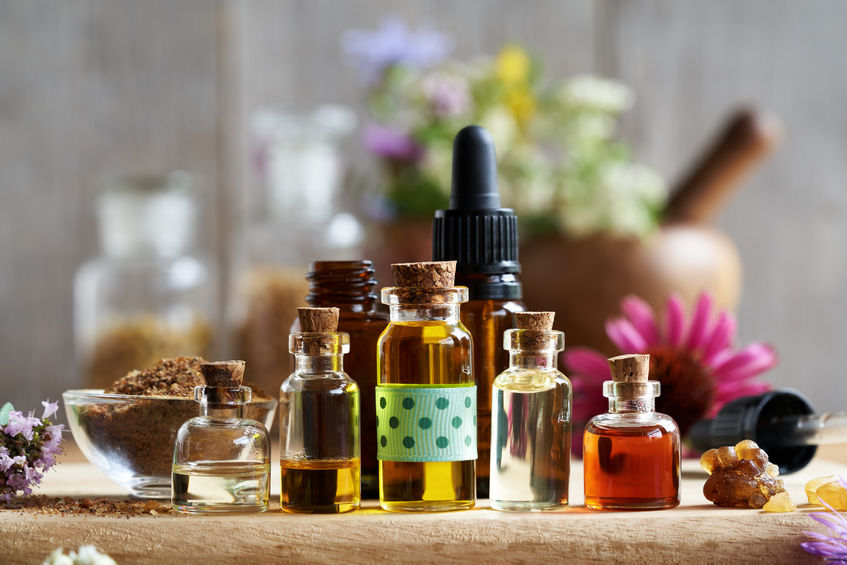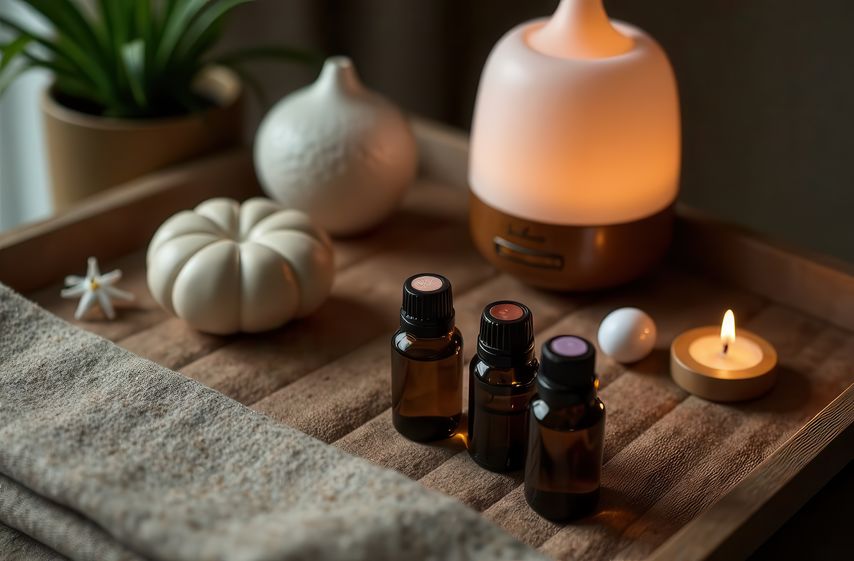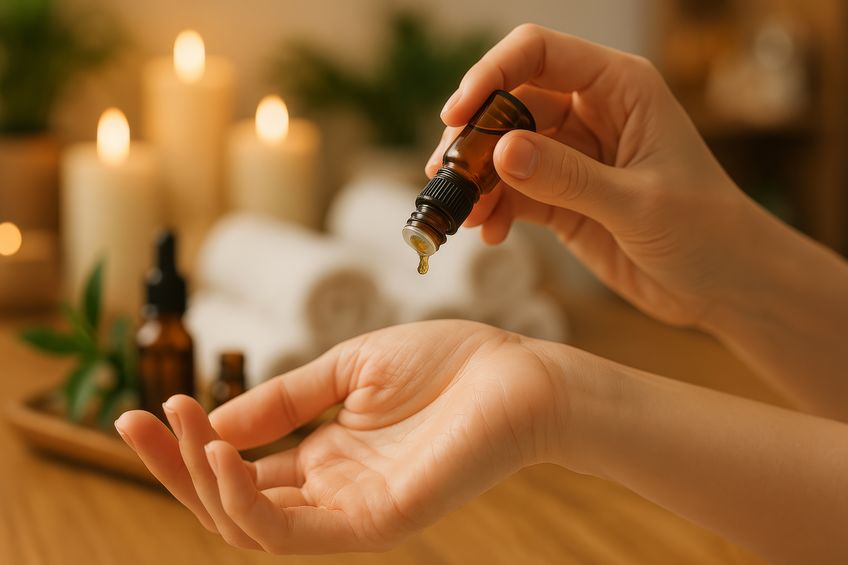
Chronic pain isn’t just a physical issue; it can affect your sleep, your energy, your mood, and your quality of life. While conventional treatments may help, many people are now looking to essential oils and aromatherapy as part of a more holistic approach to pain relief. These natural plant-based remedies don’t just smell good; they can actually offer powerful support for managing discomfort and promoting relaxation.
Let’s explore how essential oils work, why they may help with chronic pain, and how you can safely and effectively use them as part of your daily wellness routine!
What Are Essential Oils?
Essential oils are highly concentrated plant extracts obtained through steam distillation, cold pressing, or other natural processes. These oils capture the plant’s scent and beneficial chemical properties—what many refer to as its “essence.”
There are over 100 commonly used essential oils, each with unique therapeutic properties. For example:
- Peppermint is known for its cooling, pain-relieving qualities.
- Lavender is calming and may help ease tension and support better sleep.
- Chamomile is gentle and soothing—ideal for skin irritations or joint discomfort.
- Eucalyptus supports circulation and relieves congestion.
- Frankincense is often used for inflammation and stress-related pain.
How Aromatherapy Works for Pain Relief
Aromatherapy is the practice of using essential oils for therapeutic purposes, usually through inhalation or skin absorption. When you inhale an essential oil either via a diffuser, inhaler, or steam treatment, the molecules travel through your olfactory system and stimulate your brain’s limbic system. This area of the brain influences your emotions, nervous system, and pain response.
Inhaling essential oils may help:
- Ease tension and anxiety that contribute to chronic pain
- Trigger relaxation and improve sleep quality
- Influence the body’s perception of pain by calming the nervous system
Topical Use for Targeted Relief
Essential oils can also be applied to the skin, typically diluted in a carrier oil such as coconut, almond, or jojoba oil to relieve localized pain. This method allows the oil to penetrate the skin and interact with tissues, muscles, and joints.

Some ways to use essential oils topically for pain:
- Massage into sore muscles and joints
- Apply to the temples or neck for tension headaches
- Use in a warm compress to ease stiffness
Note: Always do a patch test first and avoid applying undiluted essential oils directly to the skin.
Essential Oils Commonly Used for Pain Relief
Here are a few popular oils and how they may help with chronic pain:
- Peppermint: Contains menthol, which offers a cooling effect and helps ease tension headaches and sore muscles. It also supports digestion, which can be helpful for abdominal cramping.
- Lavender: Known for its calming aroma, lavender may help reduce anxiety, promote sleep, and relieve nerve-related pain.
- Eucalyptus: Helps reduce inflammation and improve circulation—great for arthritis and joint pain.
- Frankincense: Supports overall immune function and reduces inflammation, making it helpful for long-term pain management.
- Clove: Acts as a natural analgesic and is often used in dental care, but it also works well for muscle soreness.
- Ginger: Offers both warming and anti-inflammatory benefits, which may reduce stiffness in joints and muscles.
Scientific Support for Aromatherapy and Pain
While essential oils have been used for centuries, modern research is beginning to support their role in pain management as well. Clinical studies have shown that certain essential oils can help reduce inflammation, ease muscle soreness, and improve sleep—factors that all contribute to a better pain response.
Lavender and peppermint, for example, have been studied for their calming and analgesic properties, particularly in relation to tension headaches, arthritis, and menstrual pain. Other oils, such as ginger and eucalyptus, have demonstrated anti-inflammatory effects that may provide relief from joint and muscle discomfort.
Although essential oils aren’t a cure-all, they can be a valuable part of a broader pain management routine when used safely and consistently.
Safety Tips When Using Essential Oils
- Always dilute essential oils before applying them to the skin.
- Avoid contact with eyes, mucous membranes, and open wounds.
- Keep essential oils out of reach of children and pets.
- If you’re pregnant, nursing, or on medication, check with a healthcare provider before use.
Make Essential Oils Part of Your Daily Routine

If you’re managing chronic pain, consider incorporating aromatherapy into your self-care routine. Start small with a calming diffuser blend at bedtime or a soothing massage oil after a long day. Over time, you may find that these simple practices bring real comfort and a renewed sense of control over your well-being.
At Dande-Lion Herb Shop, we carry a wide selection of essential oils in Glen Burnie, MD, from trusted brands like dōTERRA and NOW, including both single oils and curated blends. Our educated staff is here to help you choose the best options for your specific concerns and guide you on how to use them safely and effectively.
Whether you’re new to essential oils or looking to expand your toolkit, we’re here to help you discover what works best for your body.
